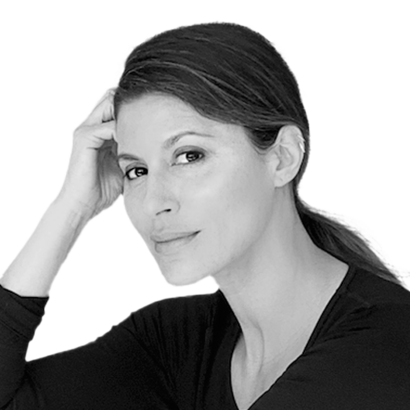No six-pack? No problem. Now plastic surgeons can give you what Pilates and Mother Nature have not been able to.
Just ask Tracy, a self-professed fitness-obsessed mom of three in Brooklyn, who recently had her already svelte midsection “lipo-sculptured” to reveal the rock-hard abs of her dreams. “I’m a crossfitter. I’m a boxer. It’s not like I’m sitting around eating bonbons,” she told me. “But when it came time to put on a bathing suit, I was always reaching for the one-piece.”
After consulting with two plastic surgeons, who told her she didn’t have enough fat or loose skin for a tummy tuck or liposuction, Tracy found Ryan Neinstein, M.D., a surgeon in Midtown Manhattan who specializes in body contouring and whose Instagram account features pictures of himself and his long-legged wife on lavish vacations to South Beach and St. Barth’s. Dr. Neinstein agreed to perform a “reverse tummy tuck” and liposuction on Tracy (price tag: $20,000) in order to accentuate her abdominal area.
It’s been six weeks since Tracy’s surgery. The first few days she felt numbness, itchiness, and “lots of pins and needles” in her midsection. After day six, the drain was removed, and she started to get weekly lymphatic-drainage massages to reduce swelling. By week five she was back in the gym, showing off her new abs. “I work out with 25-year-olds. I just wanted to feel like I was part of the pack,” she said.
Not Your Grandmother’s Lipo
This is not your grandmother’s lipo. And for influencers, soccer moms, and every perfection addict in between, having a toned midriff is like Bitcoin in the bank—it’s the currency du jour.
Scroll through the Instagram feeds of Hailey Bieber, Emily Ratajkowski, and J. Lo and you’ll see a whole lot of what the Internet has cheekily dubbed the “ab crack.” The defining characteristic of the female body we aspire to most right now isn’t full breasts or a lifted bottom, but rather sculpted abs and a trim waist.
“Strong is sexy. Healthy is sexy,” said Dr. Neinstein. But how many of us have the time—or the dedication—to work out like a fitness influencer?
Having a toned midriff is like Bitcoin in the bank—it’s the currency du jour.
Like Westinghouse and Edison fighting over electrical charge, there are, it seems, two camps arguing over which one created the stomach-sculpting trend. “Abdominal etching” was trademarked and registered by Henry Mentz, a triple-board-certified plastic surgeon in Houston, in 2007. But the Colombian surgeon Alfredo Hoyos, M.D., is often credited with pioneering the technique, which he calls “High Def Liposuction,” a procedure that’s been popular in Latin America for years but is suddenly hitting the mainstream in the U.S.
In the U.S. alone, 491,098 liposuction procedures were performed in 2021, a nearly 70 percent increase over 2018, while 242,939 abdominoplasties, or tummy tucks, were performed in the same year, according to the Aesthetic Society, a leading industry association comprising more than 2,600 board-certified members. (The association notes they changed their research methodology in 2020, which may inflate comparisons to a degree.)
From his leather-and-marble office overlooking Fifth Avenue, Dr. Neinstein bristles slightly at the word “etching,” emphasizing that his work simply magnifies what his patients have already accomplished in the gym.
“We don’t artificially create anything. We just take a little more out in the valley and leave a little more in the hill to accentuate the lines between the muscles,” he said, adding that the results are always “elegant” and not overly masculine, especially for female patients, who want to look “toned” rather than jacked.
“I no longer had an hourglass figure. I wanted to see contour. I wanted to see an oblique,” said Danielle, 35, a mom of two based in downtown Manhattan. Danielle went to Dr. Sachin Shridharani, a plastic surgeon on the Upper East Side, to perform something called Lipo 360 (a procedure that includes liposuction of the abs, flanks, mid-back, and waist) after giving birth to her second child.
“I couldn’t fix certain things” after having children, she said. Now Danielle’s sporty abs and slender waist play a starring role in her glamorous Instagram feed, and she feels better about her body than she has in years. “I’m still young,” she says.
“I wanted to see contour. I wanted to see an oblique.”
It’s not just moms looking for their pre-baby abs back, though—online, girls as young as 24 have started showing off the work done on their midsections.
Douglas Steinbrech, M.D., a plastic surgeon who practices in New York and Los Angeles, said he’s been doing abdominal etching—his Web site refers to it as “gladiator abs” and “daddy do over”—since 2015, mostly on men.
Over the years, more of those men started bringing in their girlfriends and wives, who wanted similar body contouring. “For them, we do something called Pilates abs. Women want more and more definition, but they want to keep it looking softer—they don’t want to look like they are doing a bodybuilding competition,” said Dr. Steinbrech.
“Strong is sexy. Healthy is sexy.”
“What’s interesting is that we as Americans think of it as a six-pack [and] the French call it the tablet du chocolat [translation: chocolate bar],” says Dr. Navin Singh, a double-board-certified plastic surgeon in McLean, Virginia.
Most surgeons won’t perform liposuction on patients who have a body-mass index of more than 30. Liposculpture patients should be within 15 percent of their ideal body weight. “They have to be close,” says Singh, whose patient roster includes some of D.C.’s top lobbyists, politicians, and other power brokers. Otherwise, results can be sub-optimal. “I have seen horrible outcomes, waffle patterns,” Singh says. “Nobody believes that that is muscle.”
Fixing botched abdominal-etching procedures is a specialty of Misbah Khan, M.D., a dermatologic surgeon in Manhattan. Sometimes the outcome can look good right after surgery, but then scar tissue develops three to six months after the procedure, creating “brown” lines that look more like deformities and less like sexy lines. Her revisions can be just as costly as the original procedures, if not moreso.
Adam Kolker, M.D., a plastic surgeon on Park Avenue, is not a fan of abdominal etching. He underscores that “safe and effective” liposuction has traditionally focused on fat that lies deeper in the body, to uniformly reduce excess fat. Working closer to the skin’s surface can increase the likelihood that contour irregularities and scar tissue are visible.
Plus, says Kolker, “if a patient gains weight, the fatty pockets of ‘faux muscle’ can paradoxically grow larger. In an individual who is not otherwise extremely fit, a high-definition-etched abdomen—or chest, or arms—can simply look unnatural.”
In other words, don’t give up your gym membership quite yet.
Tatiana Boncompagni is a Manhattan-based beauty-and-health writer. She is also the founder of Eat Sunny, a healthy-meal delivery service


